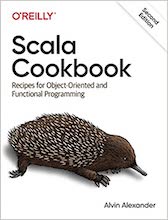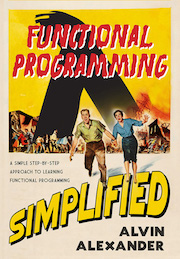Axis 2 example source code file (JSONMessageFormatter.java)
The Axis 2 JSONMessageFormatter.java source code/*
* Licensed to the Apache Software Foundation (ASF) under one
* or more contributor license agreements. See the NOTICE file
* distributed with this work for additional information
* regarding copyright ownership. The ASF licenses this file
* to you under the Apache License, Version 2.0 (the
* "License"); you may not use this file except in compliance
* with the License. You may obtain a copy of the License at
*
* http://www.apache.org/licenses/LICENSE-2.0
*
* Unless required by applicable law or agreed to in writing,
* software distributed under the License is distributed on an
* "AS IS" BASIS, WITHOUT WARRANTIES OR CONDITIONS OF ANY
* KIND, either express or implied. See the License for the
* specific language governing permissions and limitations
* under the License.
*/
package org.apache.axis2.json;
import org.apache.axiom.om.OMDataSource;
import org.apache.axiom.om.OMElement;
import org.apache.axiom.om.OMOutputFormat;
import org.apache.axiom.om.impl.llom.OMElementImpl;
import org.apache.axiom.om.impl.llom.OMSourcedElementImpl;
import org.apache.axiom.soap.SOAPFault;
import org.apache.axis2.AxisFault;
import org.apache.axis2.Constants;
import org.apache.axis2.description.WSDL2Constants;
import org.apache.axis2.context.MessageContext;
import org.apache.axis2.transport.MessageFormatter;
import org.apache.axis2.transport.http.util.URIEncoderDecoder;
import org.codehaus.jettison.mapped.MappedNamespaceConvention;
import org.codehaus.jettison.mapped.MappedXMLStreamWriter;
import javax.xml.stream.FactoryConfigurationError;
import javax.xml.stream.XMLStreamException;
import javax.xml.stream.XMLStreamWriter;
import java.io.*;
import java.net.MalformedURLException;
import java.net.URL;
import java.util.ArrayList;
import java.util.Iterator;
/**
* This JSONMessageFormatter is the formatter for "Mapped" formatted JSON in Axis2. This type of
* JSON strings are really easy to use in Javascript. Eg: <out><in>mapped
* JSON</in></out> is converted to... {"out":{"in":"mapped JSON"}} WARNING: We do not
* support "Mapped" JSON Strings with *namespaces* in Axis2. This convention is supported in Axis2,
* with the aim of making Javascript users' life easy (services written in Javascript). There are no
* namespaces used in Javascript. If you want to use JSON with namespaces, use the
* JSONBadgerfishMessageForatter (for "Badgerfish" formatted JSON) which supports JSON with
* namespaces.
*/
public class JSONMessageFormatter implements MessageFormatter {
public String getContentType(MessageContext msgCtxt, OMOutputFormat format,
String soapActionString) {
String contentType = (String)msgCtxt.getProperty(Constants.Configuration.CONTENT_TYPE);
String encoding = format.getCharSetEncoding();
if (contentType == null) {
contentType = (String)msgCtxt.getProperty(Constants.Configuration.MESSAGE_TYPE);
}
if (encoding != null) {
contentType += "; charset=" + encoding;
}
return contentType;
}
/**
* Gives the JSON message as an array of bytes. If the payload is an OMSourcedElementImpl and it
* contains a JSONDataSource with a correctly formatted JSON String, gets it directly from the
* DataSource and returns as a byte array. If not, the OM tree is expanded and it is serialized
* into the output stream and byte array is returned.
*
* @param msgCtxt Message context which contains the soap envelope to be written
* @param format format of the message, this is ignored
* @return the payload as a byte array
* @throws AxisFault if there is an error in writing the message using StAX writer or IF THE
* USER TRIES TO SEND A JSON MESSAGE WITH NAMESPACES USING THE "MAPPED"
* CONVENTION.
*/
public byte[] getBytes(MessageContext msgCtxt, OMOutputFormat format) throws AxisFault {
OMElement element = msgCtxt.getEnvelope().getBody().getFirstElement();
//if the element is an OMSourcedElementImpl and it contains a JSONDataSource with correct convention,
//directly get the JSON string.
if (element instanceof OMSourcedElementImpl &&
getStringToWrite(((OMSourcedElementImpl)element).getDataSource()) != null) {
String jsonToWrite = getStringToWrite(((OMSourcedElementImpl)element).getDataSource());
return jsonToWrite.getBytes();
//otherwise serialize the OM by expanding the tree
} else {
try {
ByteArrayOutputStream bytesOut = new ByteArrayOutputStream();
XMLStreamWriter jsonWriter = getJSONWriter(bytesOut);
element.serializeAndConsume(jsonWriter);
jsonWriter.writeEndDocument();
return bytesOut.toByteArray();
} catch (XMLStreamException e) {
throw AxisFault.makeFault(e);
} catch (FactoryConfigurationError e) {
throw AxisFault.makeFault(e);
} catch (IllegalStateException e) {
throw new AxisFault(
"Mapped formatted JSON with namespaces are not supported in Axis2. Make sure that your" +
" request doesn't include namespaces or use the Badgerfish convention");
}
}
}
public String formatSOAPAction(MessageContext msgCtxt, OMOutputFormat format,
String soapActionString) {
return null;
}
//returns the "Mapped" JSON writer
protected XMLStreamWriter getJSONWriter(OutputStream outStream) {
MappedNamespaceConvention mnc = new MappedNamespaceConvention();
return new MappedXMLStreamWriter(mnc, new OutputStreamWriter(outStream));
}
/**
* If the data source is a "Mapped" formatted data source, gives the JSON string by directly
* taking from the data source.
*
* @param dataSource data source to be checked
* @return the JSON string to write
*/
protected String getStringToWrite(OMDataSource dataSource) {
if (dataSource instanceof JSONDataSource) {
return ((JSONDataSource)dataSource).getCompleteJOSNString();
} else {
return null;
}
}
/**
* Writes the JSON message to the output stream with the correct convention. If the payload is
* an OMSourcedElementImpl and it contains a JSONDataSource with a correctly formatted JSON
* String, gets it directly from the DataSource and writes to the output stream. If not, the OM
* tree is expanded and it is serialized into the output stream. *
*
* @param msgCtxt Message context which contains the soap envelope to be written
* @param format format of the message, this is ignored
* @param out output stream to be written in to
* @param preserve ignored
* @throws AxisFault if there is an error in writing the message using StAX writer or IF THE
* USER TRIES TO SEND A JSON MESSAGE WITH NAMESPACES USING THE "MAPPED"
* CONVENTION.
*/
public void writeTo(MessageContext msgCtxt, OMOutputFormat format,
OutputStream out, boolean preserve) throws AxisFault {
OMElement element = msgCtxt.getEnvelope().getBody().getFirstElement();
try {
//Mapped format cannot handle element with namespaces.. So cannot handle Faults
if (element instanceof SOAPFault && this instanceof JSONMessageFormatter) {
SOAPFault fault = (SOAPFault)element;
OMElement element2 = new OMElementImpl("Fault", null, element.getOMFactory());
element2.setText(fault.toString());
element = element2;
}
if (element instanceof OMSourcedElementImpl &&
getStringToWrite(((OMSourcedElementImpl)element).getDataSource()) != null) {
String jsonToWrite =
getStringToWrite(((OMSourcedElementImpl)element).getDataSource());
out.write(jsonToWrite.getBytes());
} else {
XMLStreamWriter jsonWriter = getJSONWriter(out);
element.serializeAndConsume(jsonWriter);
jsonWriter.writeEndDocument();
}
} catch (IOException e) {
throw AxisFault.makeFault(e);
} catch (XMLStreamException e) {
throw AxisFault.makeFault(e);
} catch (IllegalStateException e) {
throw new AxisFault(
"Mapped formatted JSON with namespaces are not supported in Axis2. Make sure that your" +
" request doesn't include namespaces or use the Badgerfish convention");
}
}
public URL getTargetAddress(MessageContext msgCtxt, OMOutputFormat format, URL targetURL)
throws AxisFault {
String httpMethod =
(String)msgCtxt.getProperty(Constants.Configuration.HTTP_METHOD);
OMElement dataOut = msgCtxt.getEnvelope().getBody().getFirstElement();
//if the http method is GET, send the json string as a parameter
if (dataOut != null && (httpMethod != null)
&& Constants.Configuration.HTTP_METHOD_GET.equalsIgnoreCase(httpMethod)) {
try {
String jsonString;
if (dataOut instanceof OMSourcedElementImpl && getStringToWrite(((OMSourcedElementImpl) dataOut).getDataSource()) != null)
{
jsonString = getStringToWrite(((OMSourcedElementImpl) dataOut).getDataSource());
} else {
ByteArrayOutputStream out = new ByteArrayOutputStream();
XMLStreamWriter jsonWriter = getJSONWriter(out);
dataOut.serializeAndConsume(jsonWriter);
jsonWriter.writeEndDocument();
jsonString = new String(out.toByteArray());
}
jsonString = URIEncoderDecoder.quoteIllegal(jsonString, WSDL2Constants.LEGAL_CHARACTERS_IN_URL);
String param = "query=" + jsonString;
String returnURLFile = targetURL.getFile() + "?" + param;
return new URL(targetURL.getProtocol(), targetURL.getHost(), targetURL.getPort(), returnURLFile);
} catch (MalformedURLException e) {
throw AxisFault.makeFault(e);
} catch (XMLStreamException e) {
throw AxisFault.makeFault(e);
} catch (UnsupportedEncodingException e) {
throw AxisFault.makeFault(e);
}
} else {
return targetURL;
}
}
}
Other Axis 2 examples (source code examples)Here is a short list of links related to this Axis 2 JSONMessageFormatter.java source code file: |
 The search page
The search page Other Axis 2 source code examples at this package level
Other Axis 2 source code examples at this package level Click here to learn more about this project
Click here to learn more about this project
